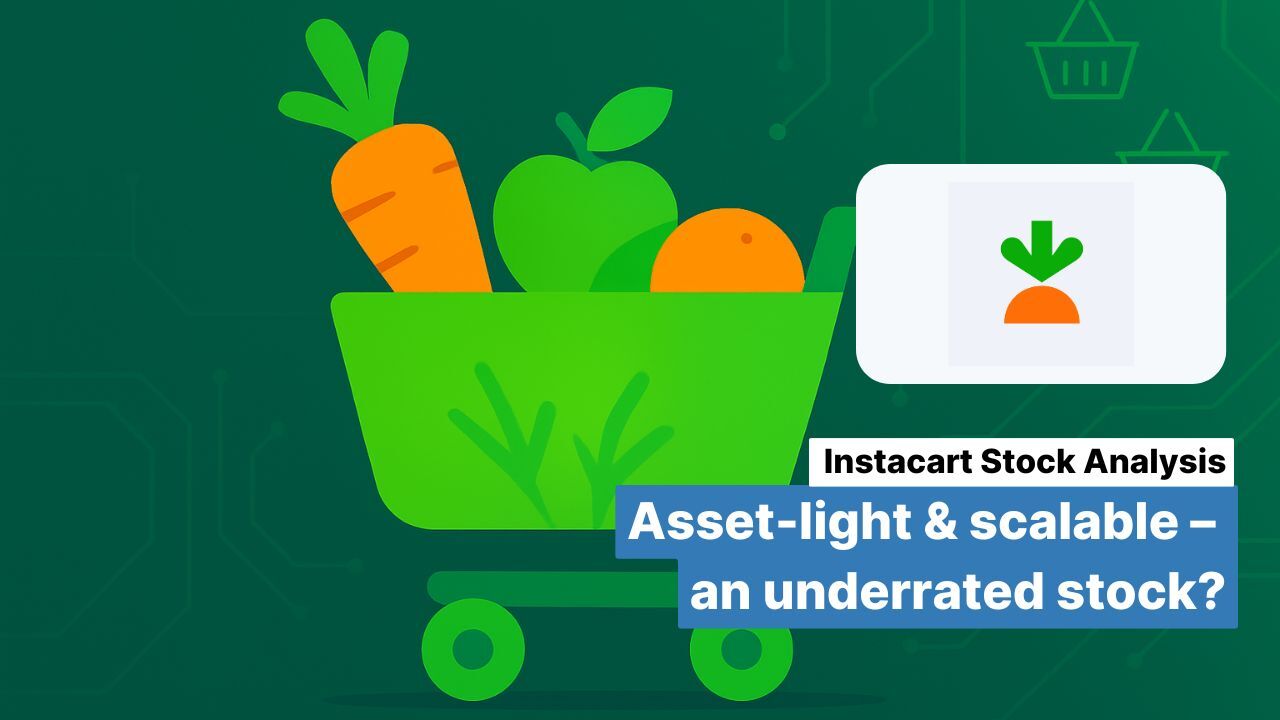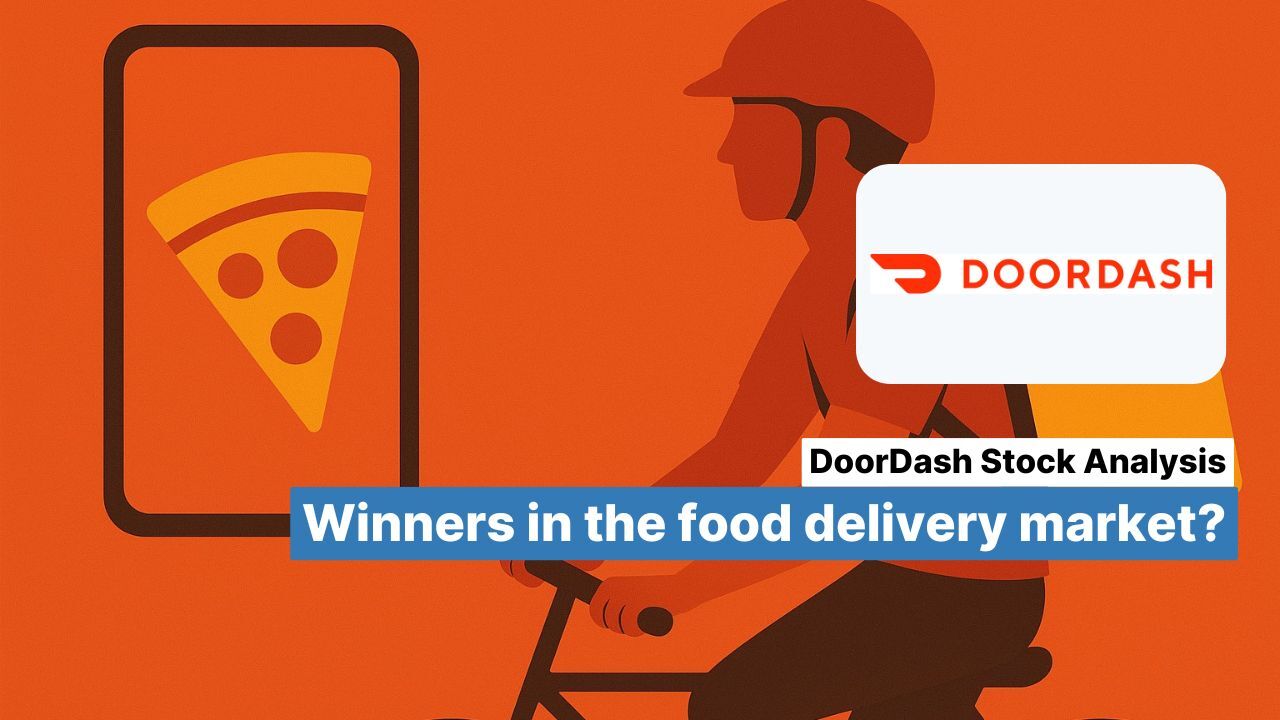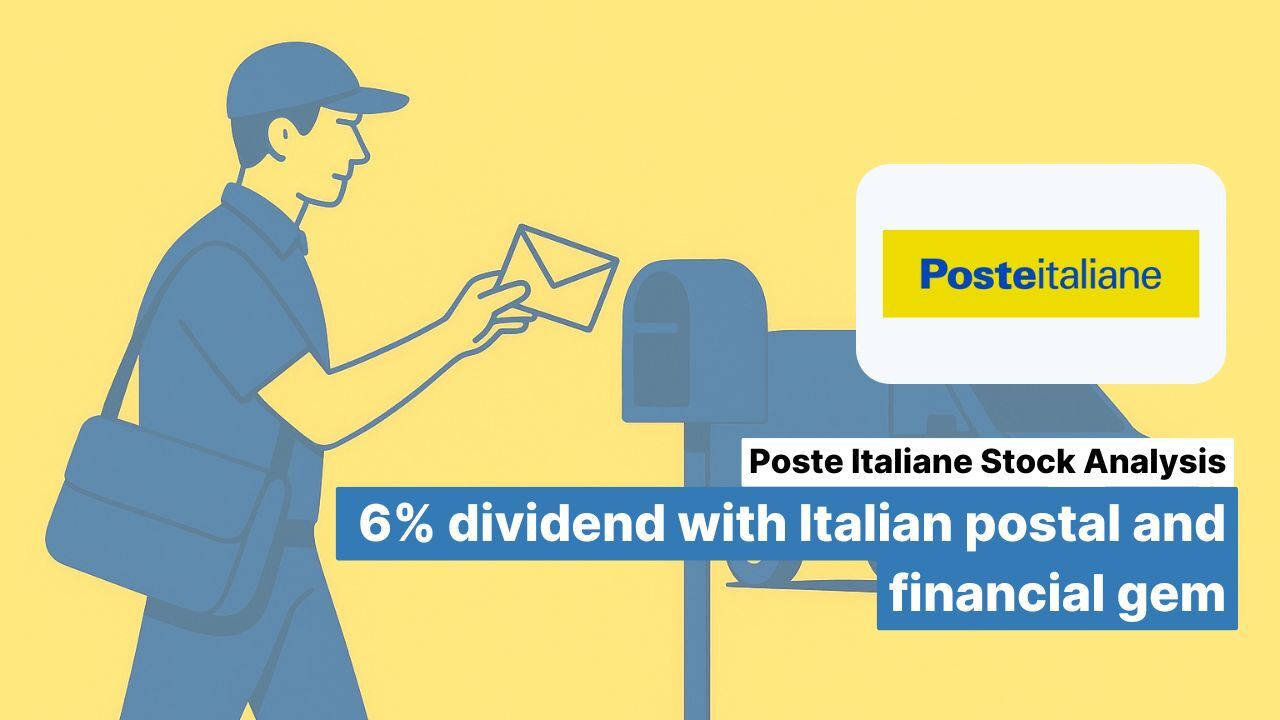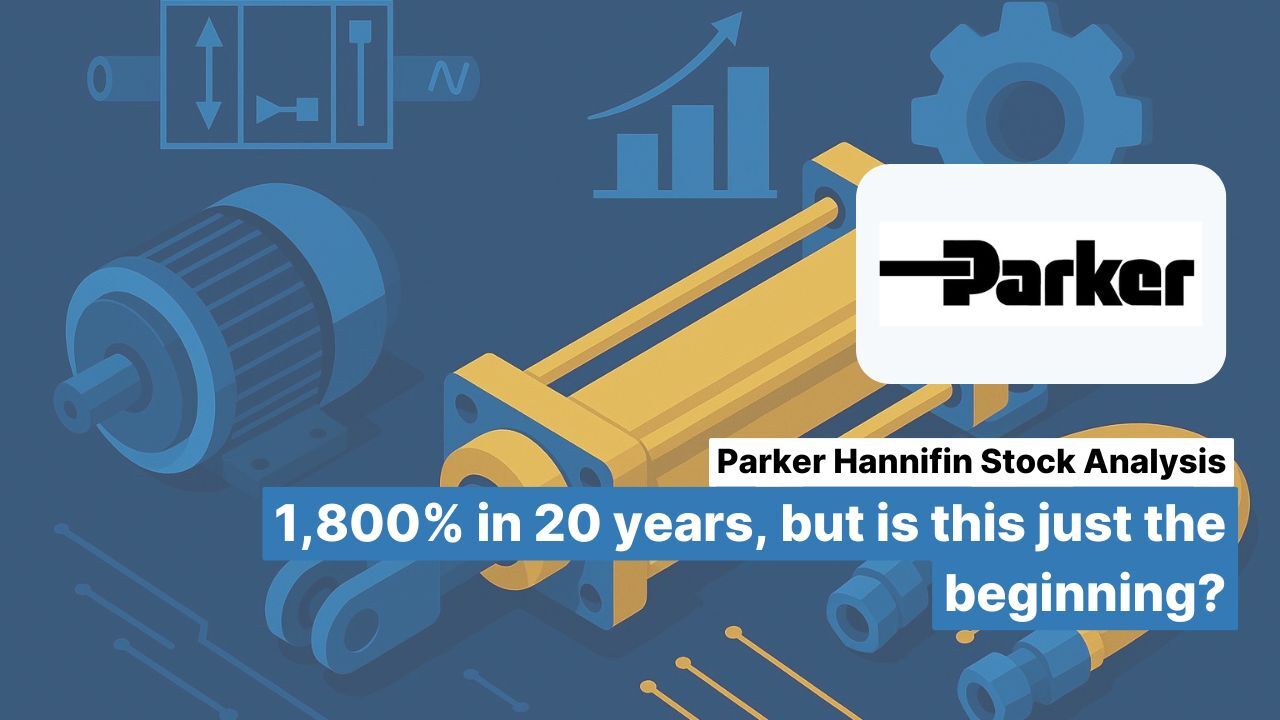Table of Contents
- Company profile – the dominant platform for food delivery in the US
- The latest Instacart quarterly figures for March 2025
- Instacart stock forecast for 2025
- Key figures for Instacart stock from the HGI analysis
- Evaluation of Instacart stock
In recent years, Instacart (ISIN: US5653941030) has established itself as one of the leading online grocery retailers in North America. It is benefiting from the growing trend toward digital shopping and combines technological innovations with an extensive partner network of retailers and brands to make online grocery shopping convenient, affordable, and reliable for consumers. Instacart's growth story is also well received by the market. This is not only because Instacart is growing profitably and generating massive free cash flows, but also because there could be growth potential for years to come. Since its IPO in 2023, the stock has gained over 50% and is on a stable upward trend.

Source: Instacart stock price performance since IPO
Of course, there have been some ups and downs along the way. Increased investment and slower growth due to intensifying competition are causing uncertainty. Against the backdrop of a changing market environment and increasing competition, we analyze Instacart's current business performance, valuation, and future prospects below to provide a comprehensive picture of the opportunities and risks facing this growth company. Is the stock a buy? The Instacart stock analysis reveals more.
💡 In a nutshell
- Instacart is the leading third-party provider of online grocery delivery in the US
- A moderate valuation and moderate growth make the stock attractive
- However, risks loom from competition and high capital expenditure
Company profile – the dominant platform for food delivery in the US
In short, Instacart, formerly known as Maplebear, operates a platform for food delivery and pickup. Customers can use an app or the website to order products from local supermarkets, which are then delivered by subcontractors.
Instacart itself does not have its own delivery fleet in the sense of employed drivers, but instead uses a network of independent contractors – an asset-light business model. With a market share of around 70 percent, Instacart has become the leading third-party provider in the US for the delivery of groceries from supermarkets to end customers. However, looking at the online grocery market as a whole, Instacart ranks third behind Walmart and Amazon, with a market share of just over 20 percent. The business model is essentially based on two main sources of revenue: transaction business and advertising and other income.
In the transaction revenue segment, Instacart earns money through various fees charged for using the platform. These include delivery fees, which vary depending on urgency, distance, and order size. In addition, Instacart charges service fees, which are calculated as a percentage of the order value and cover, among other things, the costs of purchasing and logistics. In some cases, product prices on the platform differ from actual store prices, allowing Instacart to generate additional margin. In addition, the company generates revenue through partnerships with retailers who pay for access to the platform and use of Instacart's fulfillment technology. Transaction-based revenue is one of the main sources of income. They accounted for around 72 percent of total revenue in the first quarter of 2025 and grew by 8 percent.
The smaller Advertising & Other Revenue segment, which accounts for around 28 percent of revenue, developed somewhat more dynamically. It has become a particularly high-margin segment in recent years and most recently grew by 14 percent, almost twice as fast as the transaction-based revenue business. Instacart offers consumer goods brands the opportunity to advertise their products specifically within the app. This includes sponsored product recommendations, discount campaigns, and banner placements. The advertising content is performance-oriented and based on the specific shopping behavior of users. This targeted knowledge about customers is particularly valuable, as we have learned since the rise of Google and Facebook. Instacart also sells aggregated data analytics to brands and retailers, who can use it to optimize their marketing efforts. Another component of this revenue stream is the provision of white-label technology under the name “Instacart Platform,” which retailers can use to operate their own digital offerings.

Source: Instacart enterprise value history
The combination of transaction-based revenues and a fast-growing advertising business is expected to increase profitability in the long term and consolidate Instacart's position as the leading platform in online grocery retail. The same applies to the expansion abroad, which has been driven forward for years. In 2024, US$131 million was generated abroad, representing growth of over 23 percent compared to the previous year. By contrast, domestic business grew by just under double digits. Growth is particularly important to prevent competitors from entering the market and to achieve a critical network size. But there is more that sets this market apart.
Market and competition
Instacart is initially facing intense competition from various players with sometimes very different business models. Its biggest competitors include grocery retailers that operate their own delivery services and online platforms. Companies such as Walmart, Kroger, and Target have been investing heavily in their digital distribution channels and logistics systems for years in order to serve customers directly without having to rely on third-party platforms such as Instacart. This in turn poses a strategic risk for Instacart, as retailers want to reduce their dependence on external platforms in the medium term.
Other platform companies offering food delivery services could also become a threat in the future. Amazon Fresh and Whole Foods are already active in the market and benefit from Amazon's strong logistics and technology base. At the same time, they have direct access to millions of Prime customers. Established players in the food delivery sector such as DoorDash and Uber Eats are also expanding their food delivery offerings. They too have existing networks, brand awareness, and penetration, which will facilitate their entry into the market.
In addition, so-called quick commerce providers are increasingly emerging, which are particularly active in urban areas and offer deliveries within 10 to 30 minutes. Companies such as Gopuff and, in Europe, Getir, Picknick, and Flink have established themselves in this area. They operate their own warehouses and can thus closely control supply chains, margins, and product ranges. Although these providers target a different customer segment, they pose a threat to Instacart, especially in densely populated regions with high order volumes. However, there are a number of factors that set Instacart apart from its competitors. For example, the company primarily acts as an intermediary and does not own any stores or warehouses – an asset-light business with low CAPEX. The platform also currently benefits from a broad network of retail partners and a flexible delivery system based on independent contractors. At the same time, Instacart is investing heavily in technology, particularly in its advertising platform, to tap into additional revenue streams and build strong brand loyalty.
Despite these strengths, the company remains under considerable pressure. On the one hand, competitors want to make vertically integrated models with full control over the value chain the standard. On the other hand, they need to achieve economies of scale through capital strength and existing customer networks. Similar ruinous developments have already occurred in the food delivery market, which has long weighed heavily on margins and set off a takeover merry-go-round. Instacart's long-term success therefore depends on how well the company itself further develops its platform model, maintains existing partnerships, and creates additional value for customers, retailers, and brands.
However, other challenges are also hampering expansion. First, the market is highly growth-driven, especially since the coronavirus pandemic, which has permanently changed customer behavior. Many consumers have now become accustomed to the convenience of online ordering, which will increase structural demand in the long term. Nevertheless, the share of online sales in total food retail remains relatively low compared to other sectors. There is still significant growth potential in this area. Another key feature is the low margin structure in the food retail sector, which also affects online providers. However, logistics are complex and cost-intensive, especially when fresh products, cold chains, and timely deliveries have to be taken into account. Providers must therefore work particularly efficiently or establish additional high-margin business areas, such as advertising or payment solutions, in order to be profitable at all. In addition, the market is characterized by high innovation and technology pressure. Successful providers must therefore invest heavily in algorithms, route optimization, inventory management, and personalization in order to differentiate themselves. At the same time, data-based marketing (retail media) is becoming a decisive differentiating factor, as it not only generates additional revenue but also binds brands more closely to platforms. Another key feature is increasing verticalization and consolidation. As already mentioned, large retailers are building their own platforms and delivery networks, while platform providers are trying to penetrate their partners' value chains more deeply through partnerships or technological services such as fulfillment or white-label shops. At the same time, smaller providers that cannot meet the high requirements are merging or withdrawing from the market. Finally, the market is also highly location-dependent. While deliveries within minutes are possible and economically viable in urban centers, scaling up in rural areas is much more difficult. Providers must therefore adapt their business models flexibly to regional conditions. Overall, the market for online grocery delivery is characterized by high growth potential, narrow margins, a strong need for technological advancement, and increasing competition—both from traditional retailers and digitally driven platforms.
The latest Instacart quarterly figures for March 2025
Instacart got off to a successful start in the first quarter of 2025 and made significant progress in implementing its long-term strategy. Specifically, revenue increased by 9 percent to US$897 million. As direct costs rose at a lower rate, gross profit increased by 11 percent to US$599 million. However, due to high sales, administrative, and R&D costs, EBITDA, EBIT, and net income declined significantly at the end of the quarter.

Source: Financial data for Q1/2025 from Instacart
The company significantly increased both its order volume and gross merchandise value, underscoring the growing importance of the platform for consumers and retail partners. It is worth noting that Instacart is growing strongly while remaining profitable. This secures the financial leeway for further investments in innovation. However, this should be closely monitored in the medium term due to the difficult market conditions.

Source: Development of Instacart's revenue, profit, gross margin, and EBIT margin
Four key customer expectations are now at the heart of the strategic focus. These include:
- convenience,
- affordability,
- quality, and
- choice.
All of these were optimized in the platform ecosystem in the last quarter. In the area of convenience, for example, through new AI-powered features such as intelligent product recommendations and personalized shopping lists. These are designed to make the digital shopping experience significantly more intuitive and inspiring. With “Smart Shop,” a new customization system, Instacart is also demonstrating how data-driven technology can make customers' everyday lives easier.
With the cost of living remaining high, affordability plays a key role. With offerings such as Instacart+ and its expanded collaboration with Chase, the company now also offers its users concrete savings benefits. This also strengthens customer loyalty. Progress has also been made in operational quality. Improved processes and new tools such as “Store View” and “Second Store Check” ultimately ensure that orders can be processed even more completely and reliably. In the area of product selection, Instacart is further expanding its role as a technology partner for retailers. For example, the acquisition of Wynshop has strengthened its enterprise business. In addition, the B2B business is being expanded with new services such as “Will Call,” which now also include distributors and business customers.
In advertising, Instacart is consolidating its position as one of the leading retail media platforms in the US. With Universal Campaigns and a growing number of partners, including Uber Eats, the company is also improving the reach and efficiency of its advertising solutions. All these developments are helping to bind brands more closely to the platform and generate additional revenue.
The first quarter thus shows that Instacart is operationally sound and driving innovation at a rapid pace. However, the environment remains challenging, as evidenced by only a slight improvement in revenue. Earnings are significantly impacted by high sales and R&D expenses. Nevertheless, the stock is on a long-term upward trend.
Instacart stock forecast for 2025
Instacart continues to expect solid growth for the second quarter of 2025. Gross merchandise value (GTV) is expected to be between US$8.85 billion and US$9.0 billion, representing an increase of 8 to 10 percent compared to the same quarter last year. It is particularly positive that the company expects the number of orders to continue to grow faster than GTV. This is a sign that more and more consumers are using Instacart regularly, even for smaller and more frequent purchases. The app therefore remains relevant. Instacart also remains on track in terms of profitability, with adjusted EBITDA expected to be between US$240 million and US$250 million in the second quarter. This would represent a further improvement on the previous year, both in absolute terms and as a percentage of GTV. Although Instacart is not providing a specific forecast for the full year, the outlook for the second quarter underscores its confidence in the operational strength and continued growth of the platform.
Analysts are even going one step further. They view developments through 2031 as thoroughly positive, as the chart below shows.

Source: Revenue and margin forecast for 2025, 2026 to 2030
Current analyst forecasts point to solid, albeit increasingly slowing, revenue growth for Instacart in the coming years. Revenue of around US$3.8 billion is expected for 2025, representing an increase of 11 percent over the previous year. Growth of over 9 percent to US$4.1 billion is also expected for 2026. From 2027 onwards, the forecast growth rate is expected to slow down somewhat. Although revenues are expected to continue to rise – to US$4.4 billion in 2027, US$4.8 billion in 2028 and finally US$5.5 billion in 2030 – annual growth will decline steadily to around 7.4 percent in 2030.

Source: Sales forecast and growth rates from Instacart
This development signals that Instacart is gradually entering a phase of market maturity after years of dynamic growth. Nevertheless, forecasts indicate that the company remains capable of achieving revenue growth in the mid-single-digit to low double-digit range – a sign of a robust business model with stable demand in online grocery shopping.

Source: Forecast of net income and margin for Instacart shares
Key figures for Instacart stock from the HGI analysis
The High Growth Investing (HGI) analysis for Instacart initially paints a mixed picture. On the one hand, there are some strong key figures, but on the other hand, there are also clear weaknesses in key growth metrics. The company is financially sound, has high margins and is debt-free. However, it currently lacks operational momentum and growth dynamics. Ultimately, however, the stock achieves a respectable HGI score of 11 out of a possible 18 points, making it a current top scorer.

Source: HGI score for Instacart stock
The EV/sales ratio of just over 3 is particularly positive and can be considered moderate in the current valuation environment. The very low PEG ratio of 0.25 again points to an attractive valuation, this time in terms of the ratio of valuation to earnings growth. It is also encouraging that Instacart has no significant debt. The company received the full three points in all three categories in the HGI analysis. Additional points were awarded for the gross margin of almost 68 percent. This figure indicates a high-margin, scalable platform business. It is also particularly positive that the gross margin has continued to increase in recent quarters. This was rewarded with two points in the HGI analysis.
On the other hand, there are weaknesses in the growth criteria. For example, revenue growth over the last twelve months (TTM) was only 11.3 percent, resulting in a Rule of 40 score of just 34.9 percent. Although growth is slightly better than for the full year 2024, it represents a significant deterioration compared to previous years. This can no longer be considered a high-growth investment.
Evaluation of Instacart stock
Instacart's current valuation shows an overall moderate valuation level, which may well appear attractive for a growth-oriented technology company with sustainable profitability.

Source: Key figures for evaluating Instacart
This is evidenced by the expected price-earnings ratio (P/E ratio) of 26, which is within a reasonable range compared to other tech platforms – especially since the company is already profitable and can continue to invest in innovation without diluting existing shareholders. On the contrary, thanks to rising free cash flows, Instacart is now even buying back its own shares.

Source: Development of outstanding shares and free cash flow
The lower expected P/E ratio also signals that the market believes the company will continue to grow its earnings. The EV/free cash flow multiple of 13 is particularly interesting, as it indicates healthy cash flow generation. Most recently, free cash flow of over US$800 million was achieved based on the last twelve months. This high figure shows once again that Instacart is likely to be relatively cheaply valued in terms of its free cash flow. The picture is similar for the EV/sales ratio of 3. For a platform model with high gross margins of over 67 percent, this figure is at the lower end of what is usual for comparable business models, especially in the retail tech environment.

Source: Developments in P/E, EV/sales and EV/FCF for Instacart shares
Overall, Instacart's valuation does not appear excessive in light of the current slowdown in growth, but rather realistic to slightly undervalued, depending on your perspective. The potential development of the P/E ratio if earnings per share continue to rise illustrates this even more clearly. A single-digit P/E ratio could already be achieved by 2028.

Source: Earnings per share of Instacart shares
However, there are investor concerns that could explain the favorable valuation. On the one hand, Instacart operates in a highly competitive market with major competitors such as Amazon Fresh and Walmart, which is likely to put pressure on prices and margins in the future. Another reason is that, despite its profitability, the company continues to invest heavily in innovation and expansion. In addition, macroeconomic uncertainties such as high inflation and fluctuating consumer spending are causing demand in the online grocery market to remain subdued. Finally, despite low penetration, the market is considered to be increasingly mature overall, meaning that the high growth rates seen in the initial phase are no longer to be expected.
Conclusion on Instacart stock
Instacart is an established company in the fast-growing online grocery market with solid technological advantages and strong partnerships. Analysts have mixed opinions on the stock.

Source: Analyst opinions on Instacart shares
The majority of them are confident about Instacart: 57 percent recommend buying the shares, while 43 percent prefer a hold position. The average price target for the next twelve months is US$55.08.
Compared to the current price of around US$47.18, this represents a price potential of around 16 percent over one year.
Despite a slowdown in revenue growth and increasing competitive pressure, the company is operating profitably and is able to keep gross margins stable or slightly increasing. However, profits have recently declined significantly due to higher administrative and R&D costs. However, this could change in the long term, with analysts forecasting net profits of US$1.2 billion for 2028. In this context, the share valuation currently appears only moderate. However, it reflects both opportunities and risks. Ultimately, however, Instacart's long-term success will depend largely on how well the company manages to reignite growth and further differentiate itself in a highly competitive market environment. For investors, Instacart could therefore offer an interesting mix of stability and growth potential, albeit with certain challenges.
🔔 If you would like to receive weekly investment ideas and free stock analyses selected according to the Levermann, high-growth investing, or dividend strategies by email, you can subscribe to our free StocksGuide Insider now.
The author and/or persons or companies associated with StocksGuide own or may own shares of Instacart. This article represents an expression of opinion and does not constitute investment advice. Please note the legal information.




